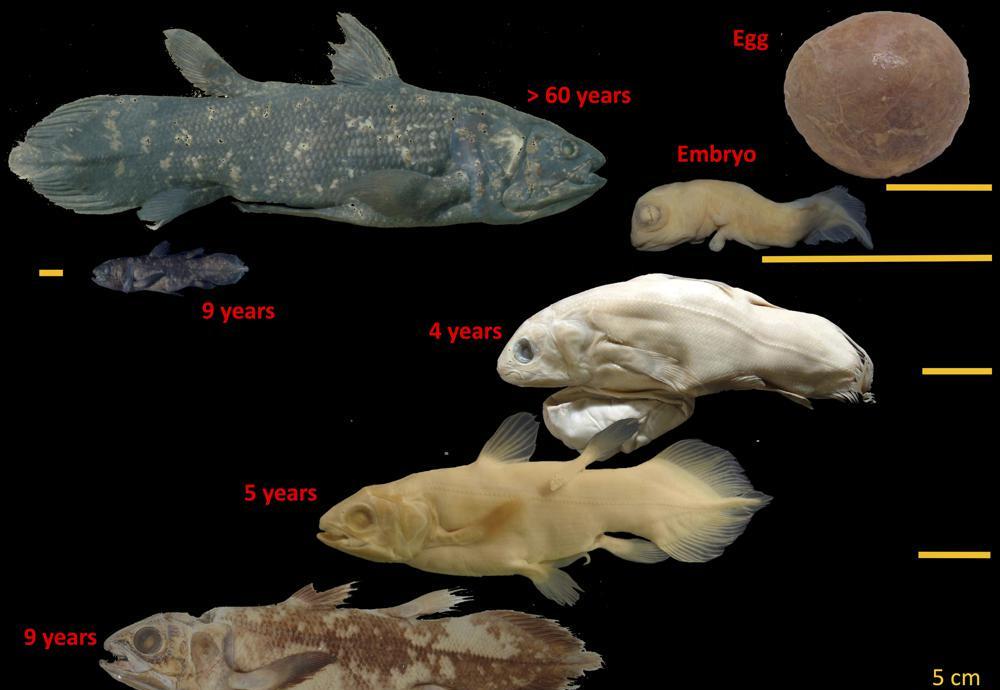According to the Associated Press and the BBC, the journal Current Biology published a new study on June 17, in which French scientists determined that the "living fossil" coelacanth, which has existed since the age of the dinosaurs, can live up to 100 years, and the female can be pregnant for at least 5 years.

Coelacanths live in the deep sea, swim slowly, "size" comparable to humans, can grow up to 1.8 meters, and can weigh more than 90 kilograms. Coelacanths have been around for about 400 million years and were thought to be extinct until 1938, when they were discovered in South Africa. For a long time, scientists believed that the lifespan of coelacanths was about 20 years.
According to reports, previously, scientists speculated on their age by the fishwheel patterns on the scales of coelacanth fish, just like the annual rings of several trees. In this study, French researchers used polarized microscopy to find many thin lines on the scales of coelacanth fish that can only be seen with polarized light.
Bruno Hernand, a marine evolutionary ecologist at the French Institute of Oceanography, said that by polarizing, a thick line on the scales of the coelacanth that was previously thought to be a coelacanth is actually composed of 5 thin lines, and each thin line represents one year old. Thus, the age of coelacanths can be approaching one century.
Because coelacanth is an endangered species, scientists can only study specimens that have been caught or died. At present, the oldest specimen measured by scientists is 84 years old.
Studies have shown that coelacanths grow extremely slowly, with female coelacanths reaching sexual maturity in their 50s and male coelacanns sexually maturing between the ages of 40 and 69. The scientists also studied two coelacanth embryos and calculated that the largest had been developed for 9 years and the youngest had been developed for 5 years. Scientists believe that the gestation period of coelacanth is at least 5 years.
Hernand said that the slow growth of coelacanths can also be found in other creatures in the deep sea, and sharks and rays also age very slowly. He believes: "They may have evolved similar life histories because they shared similar habitats." "Slow-growing fish, on the other hand, are more vulnerable to climate change and overfishing."
(Editor: YZM)